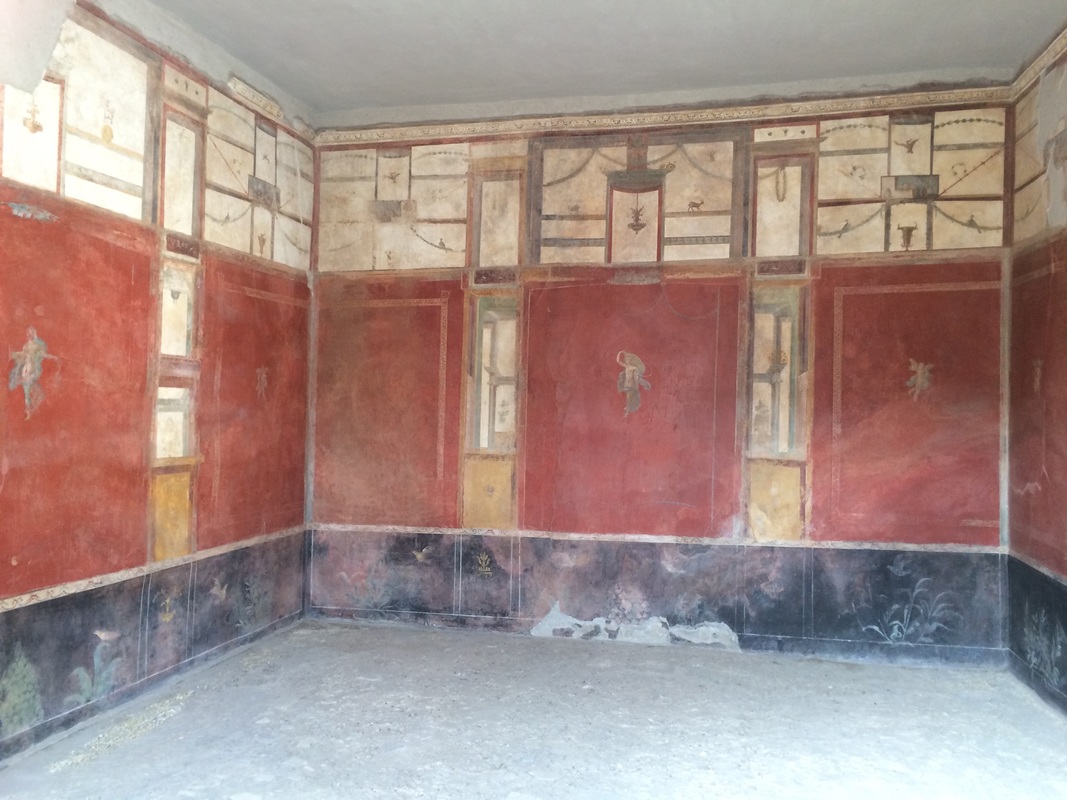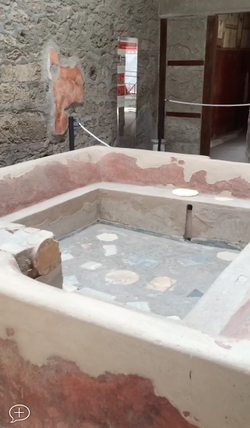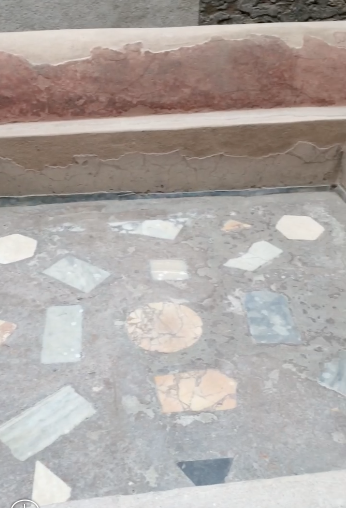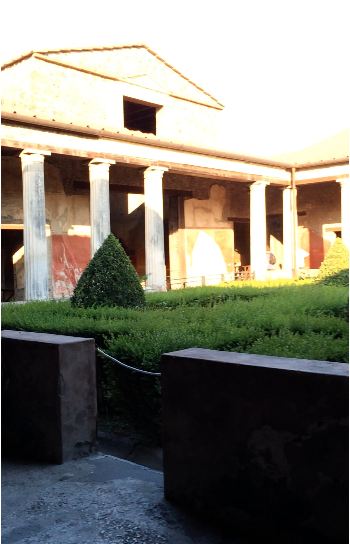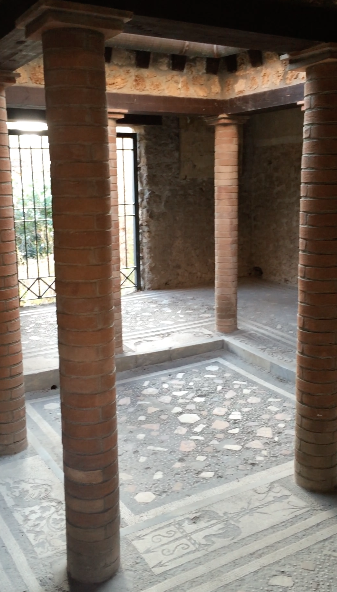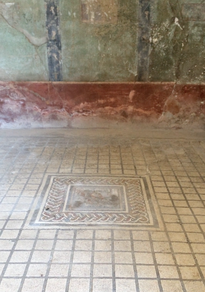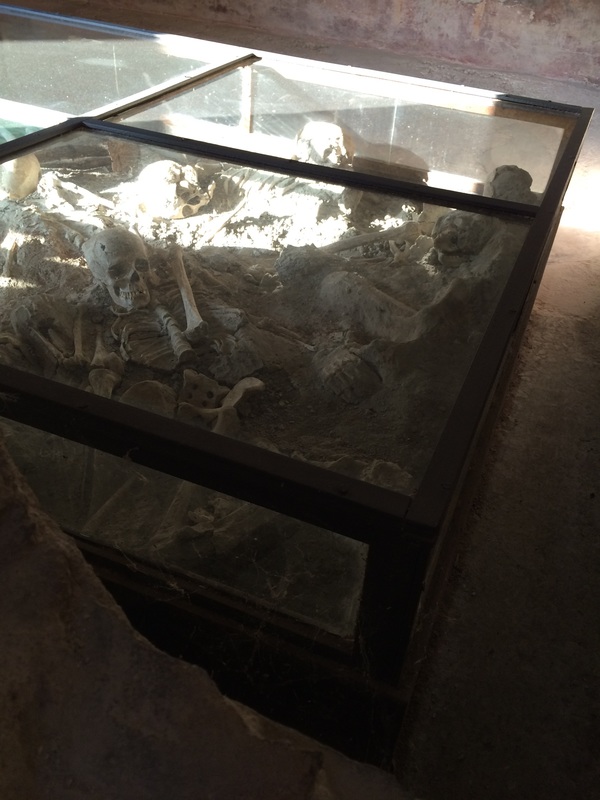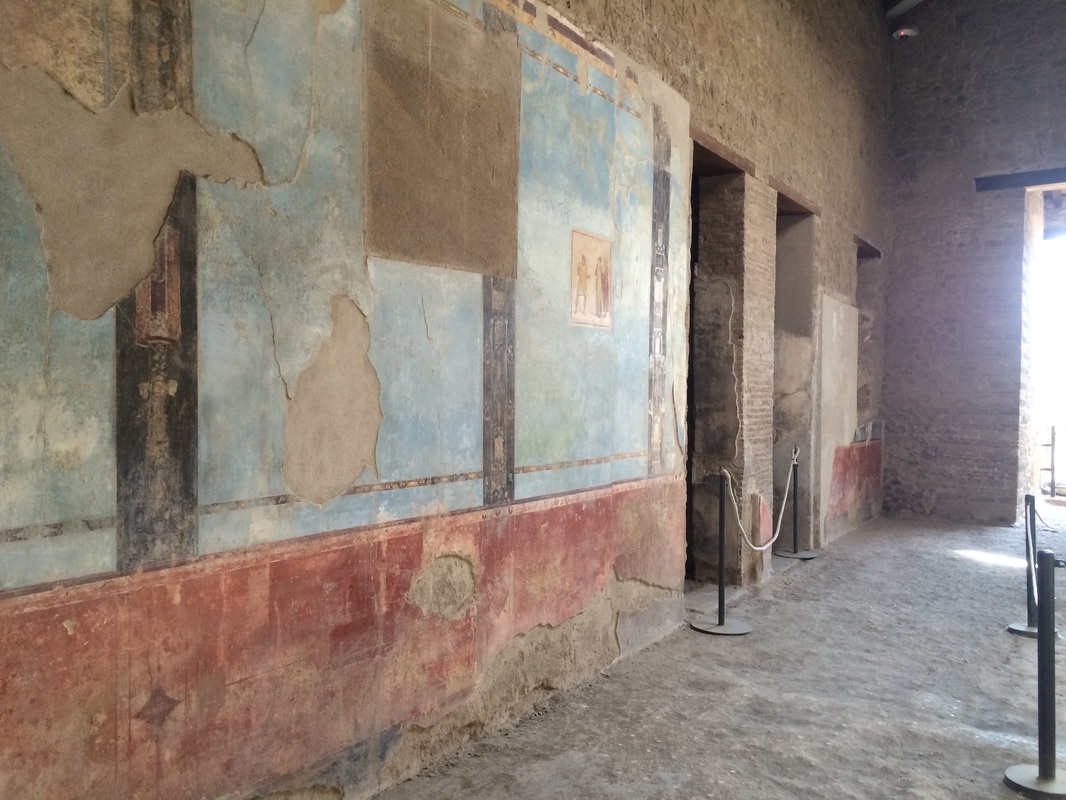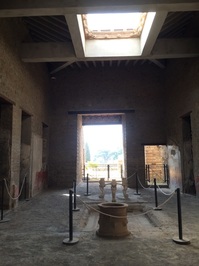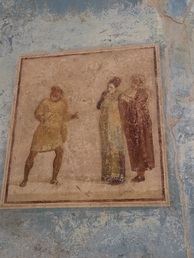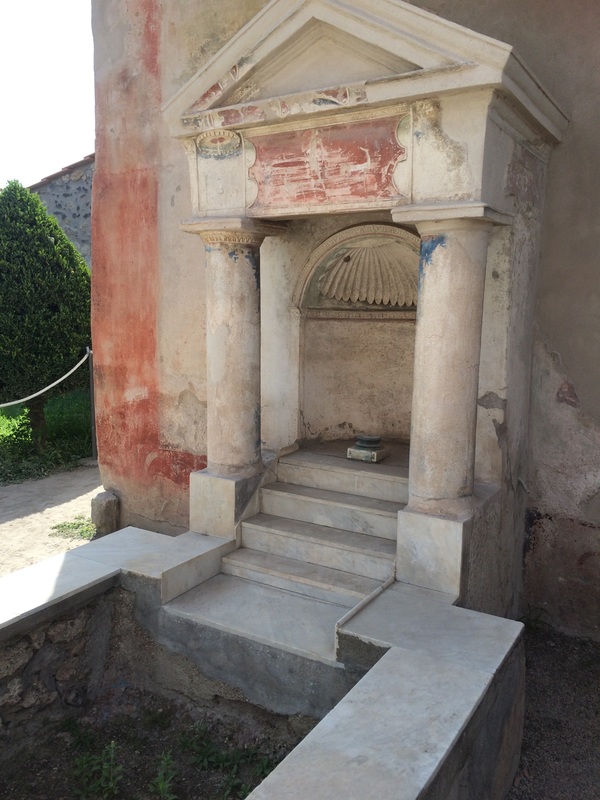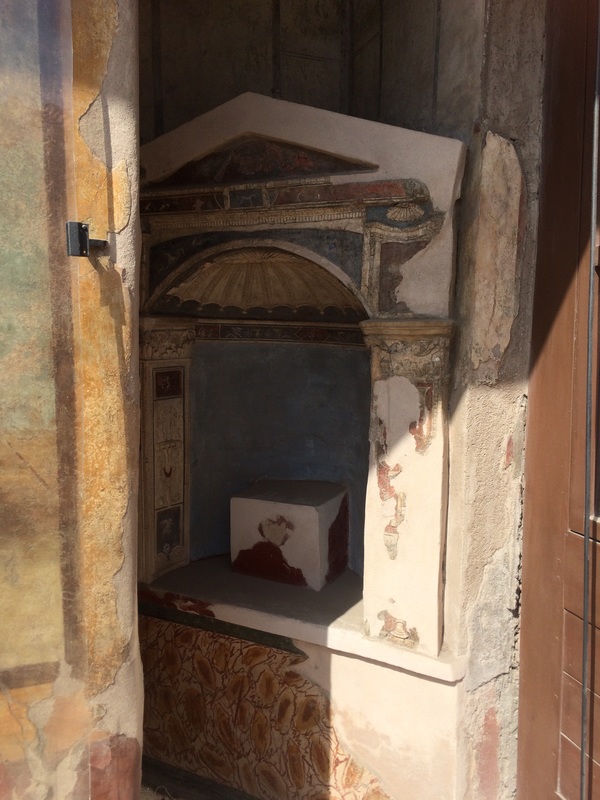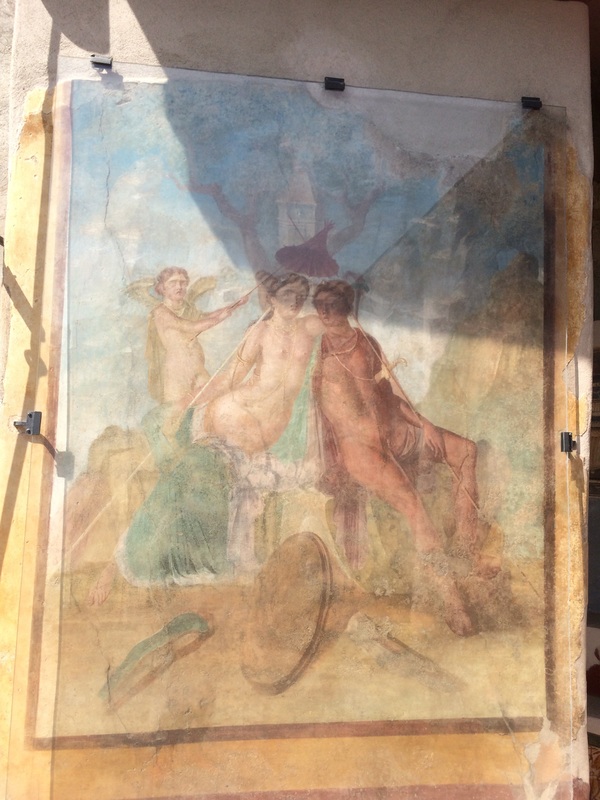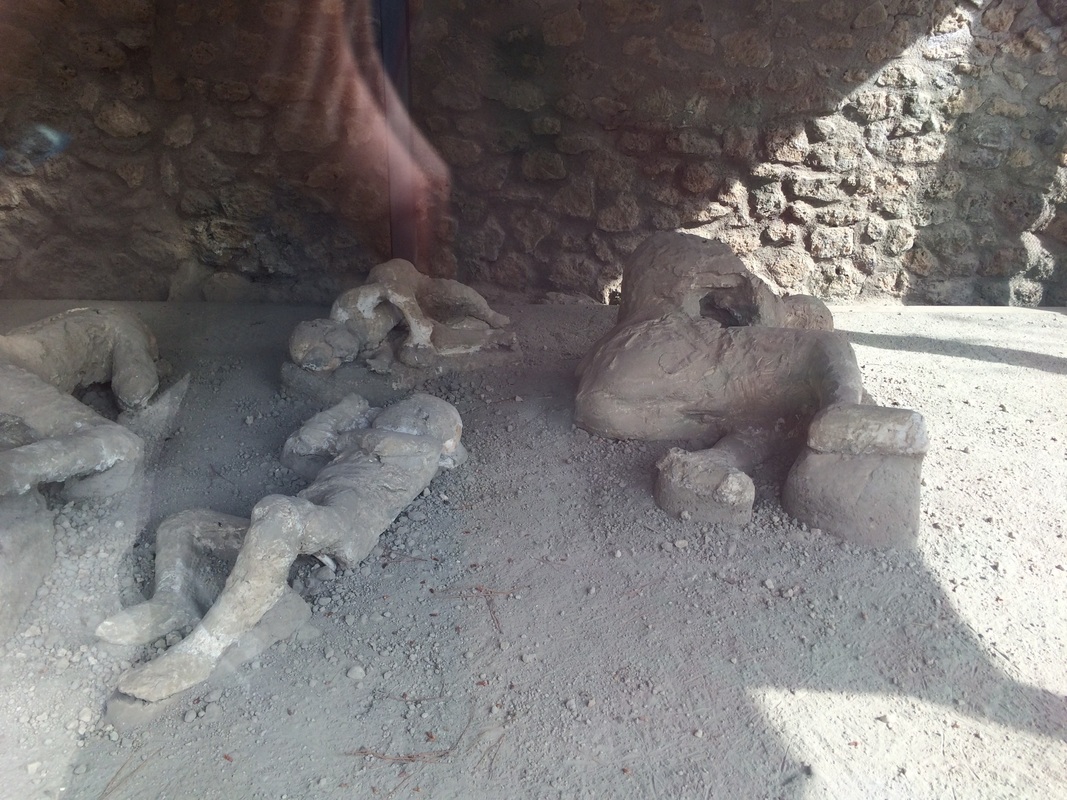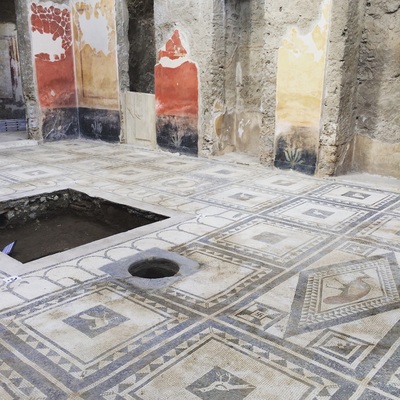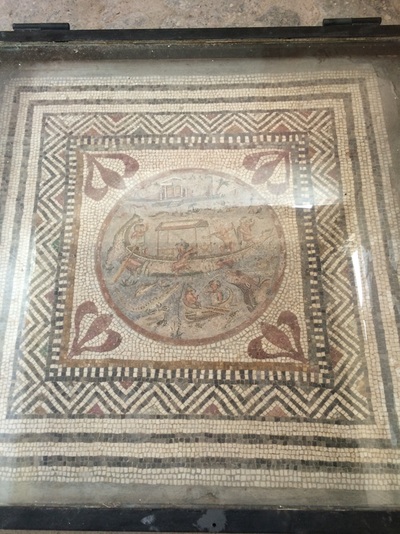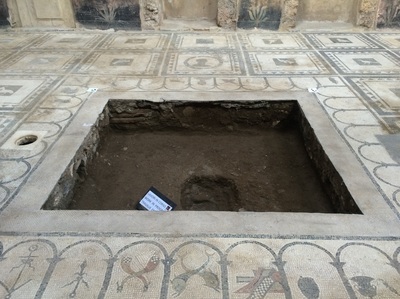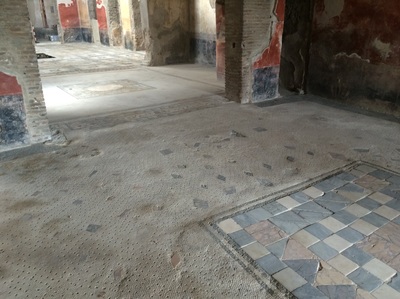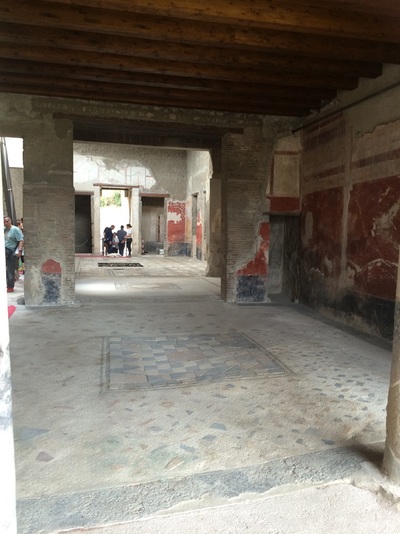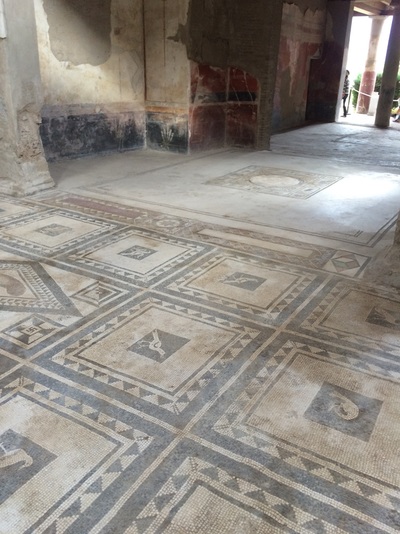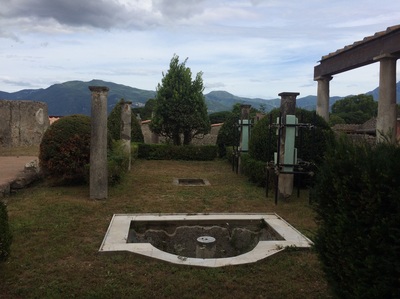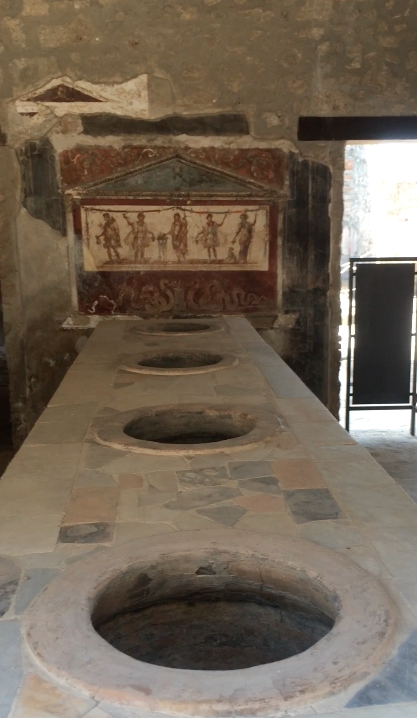House of the Ephebe
|
Garden of the Fugitives
|
|
The House of the Ephebe has a beautiful garden and triclinium (dining area) decorated with marble. There is also a small temple for worship and a large painting of Venus and Mars. A statue of an Ephebe (young man) was found in this house. For more information on the statue, click here.
Map #9 |
13 victims were found including both adults and children as they tried to make their way to the Nocera Gate, one of the 7 gates of the city. As they tried to flee, they were treading upon a layer of pumice stones that had already fallen. They died when a pyroclastic flow reached Pompeii. Their casts can be found encased in protective glass in a garden.
Map #14 |
House of Paquius Proculus
This home is most well-known for the mosaic floor. A depiction of a chained dog in front of an open door greets visitors upon entry. The atrium floor is one large mosaic. Depictions of animals in various colors as well as portraits adorn the floor. The house also has an upper level. This beautiful structure was my favorite home in Pompeii due to the amazingly preserved mosaic floors. Map #8
Thermopolium of Vetutius Placidus
This ancient fast-food shop offered hot food and drinks. The food was stored in the large jars within the counter. The beautiful fresco on the back wall is a lararium (temple to the household gods), and has images of Hermes/Mercury (god of travelers, trade, thieves) and Dionysus/Bacchus (god of wine). According to "A Guide to the Pompeii Excavations" around 6.5 lbs. of coins were found in one of the jars in the counter. This shows that this thermopolium was very successful.
Map #10
Map #10
House of the Orchard
The house of the orchard is adorned with beautiful mosaics and frescoes. Notice the rich colors and motifs found on the walls, as well as the geometric patterns on the floors. View the video of the House of the Orchard beside the slideshow below. Map #11

This work is licensed under a Creative Commons Attribution-NonCommercial-NoDerivatives 4.0 International License.
Proudly powered by Weebly
